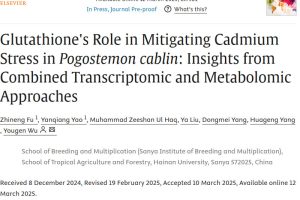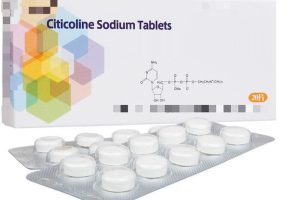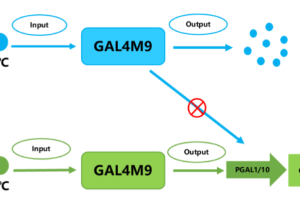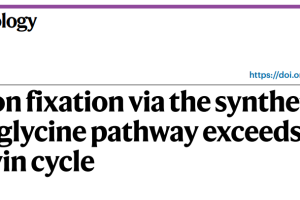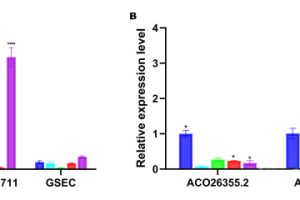We all know that nicotinamide riboside (NR), the precursor of NAD, is a promising compound that can improve obesity-related mitochondrial dysfunction and metabolic syndrome in mice.
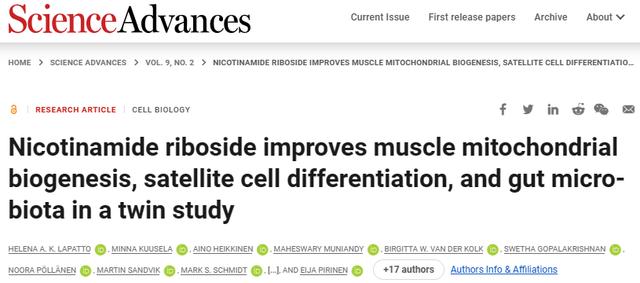
However, so far, the number of human intervention studies in NR is still relatively small, with the longest clinical trial being 12 weeks, and most short-term clinical trials conducted have not reported positive results. Given that the effects of NR are likely to be tissue-specific and dependent on body mass index (BMI), genetic background, and treatment duration, deep metabolic phenotyping of multiple tissues in well-controlled human interventions of longer duration is needed. analyze.
twin study trial
Therefore, Helena A. K. Lapatto’s team at the School of Medicine at the University of Helsinki, Finland, used 20 pairs of MZ twins with discordant BMI and 4 pairs of MZ twins with consistent BMI to determine whether long-term supplementation of NR can promote mitochondrial biogenesis and metabolic health in humans.
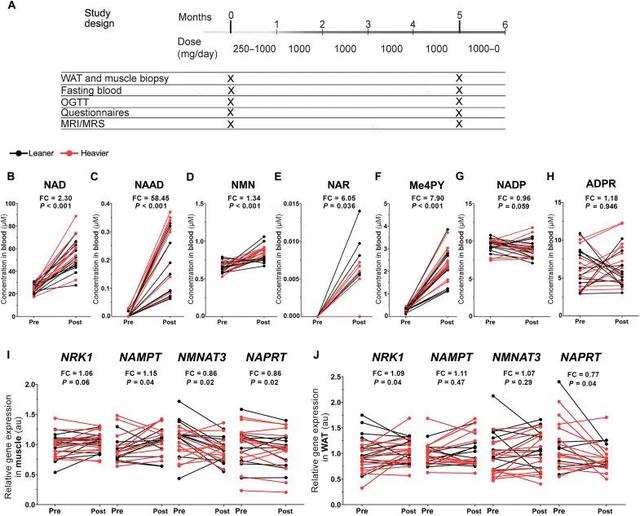
Among them, 4 pairs of twins with discordance stopped the intervention. ; And all twins with inconsistent BMI were supplemented with NR, while among the consistent twins, one pair received placebo and the other received NR; the NR dose was gradually increased to 1000 mg/day, and a research trial was conducted that lasted for 5 months.
NR increases NAD levels
To elucidate the compliance and impact of NR on NAD metabolism in twins with discordant BMI, whole blood samples were analyzed using targeted liquid chromatography-mass spectrometry. It was found that after supplementing with NR, the whole blood NAD levels of all twins with discordant BMI increased by 2.3 times.
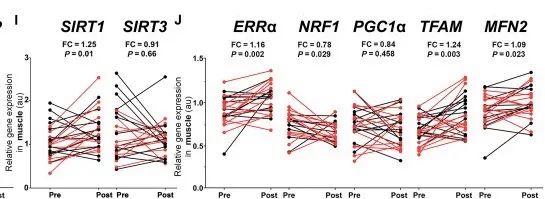
In addition, NR also significantly increased the levels of other NAD metabolites, such as nicotinamide adenine dinucleotide phosphate (NADP) showing a downward trend, while adenosine diphosphate ribose (ADPR) did not change significantly. Overall, NR is efficiently metabolized and has strong potency to increase blood NAD metabolites.
NR promotes NAD synthesis
To study the effects of NR on tissue NAD biosynthesis, the researchers measured the mRNA expression of NAD biosynthetic enzymes in muscle and WAT. It was found that at baseline, the heavier twin showed significantly lower expression of NMNAT3 and NMNAT1 in muscle and WAT. In addition, the expression of the NR metabolizing enzyme NRK1 was also lower in the WAT of the heavier twin.
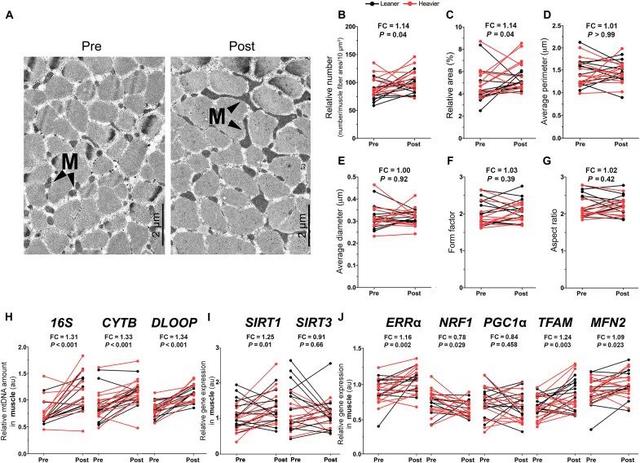
In BMI-discordant twin pairs, NR increased muscle expression of NAMPT and tended to upregulate NRK1 while decreasing NMNAT1. In WAT, NRK1 expression was significantly elevated, whereas NAMPT and NMNAT1 remained unchanged after NR. In addition, NR also down-regulated the Preiss-Handler pathway enzyme NAPRT in muscle and WAT, indicating that reduced niacin utilization increased dependence on rescue pathway enzymes on NR. Overall, NR promotes muscle and WAT NAD biosynthesis through rescue pathways.
NR enriches mitochondria in muscle
Given that NR significantly increased whole blood and tissue NAD biosynthesis in BMI-discordant twins, the researchers determined the effects of NR on mitochondrial biogenesis in these twins. It was found that after supplementation with NR, transmission electron micrographs of muscle samples showed that mitochondria became more abundant, covering a larger cross-sectional area of the muscle fiber area.
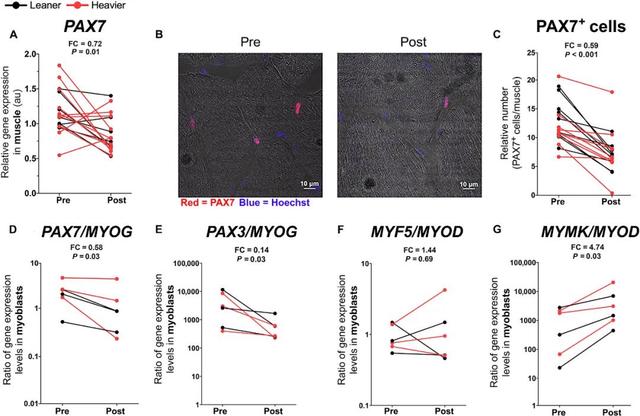
NR also significantly increased muscle mitochondrial DNA mass and muscle expression of transcription factors that regulate mitochondrial biogenesis. Furthermore, NR significantly increased the expression of muscle oxidative phosphorylation complex subunits but downregulated one complex I subunit. Overall, NR can significantly increase muscle biogenesis, which is associated with the upregulation of SIRT1/ERRα/TFAM/MFN2.
NR promotes cell differentiation
Because NR has previously been shown to increase the number and function of muscle stem cells in mice, this trial examined the effects of NR on muscle satellite cells in twins with discordant BMI. The results showed that the number of muscle-expressing stem cell markers paired box 7 (PAX7) and PAX7 satellite cells was significantly reduced after NR. Further characterization of muscle stem cells revealed that myoblasts from the NR-supplemented twins showed reduced stemness and increased differentiation.
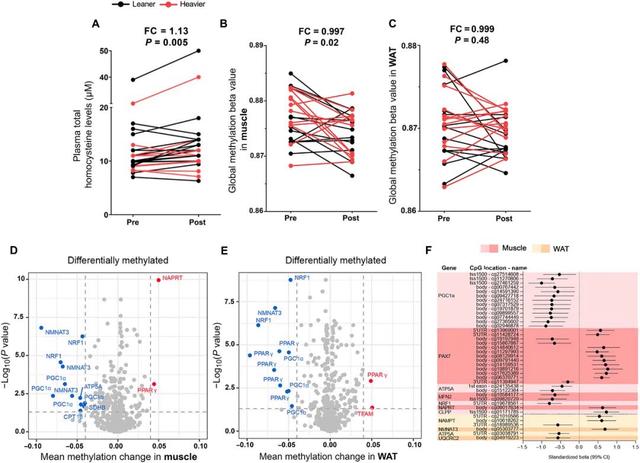
Furthermore, MYOD initiates the fusion program, and MYMK is an essential myogenic fusion factor. The expression rates of MYMK and MYOD were significantly increased in myoblasts, suggesting that NR may drive human myoblast fusion. Overall, the data suggest that NR may promote activation, differentiation, and fusion of satellite cells into existing myofibers, resulting in the observed decrease in satellite cell numbers in twins from BMI-discordant pairs.
NR may affect epigenetic regulation of gene expression
It was thought that supplementing with NAD precursors could induce methyl drop, so the researchers measured circulating homocysteine levels. It was found that NR slightly but significantly increased plasma homocysteine levels, especially in lean twins with discordant BMI pairs. These findings indicate a reduced methylation capacity of the cells. To investigate further, they measured global DNA methylation levels in muscle and WAT and found that NR significantly reduced global DNA methylation levels in muscle, but not in WAT. These results indicate that long-term NR supplementation affects global DNA methylation in a tissue-specific manner.
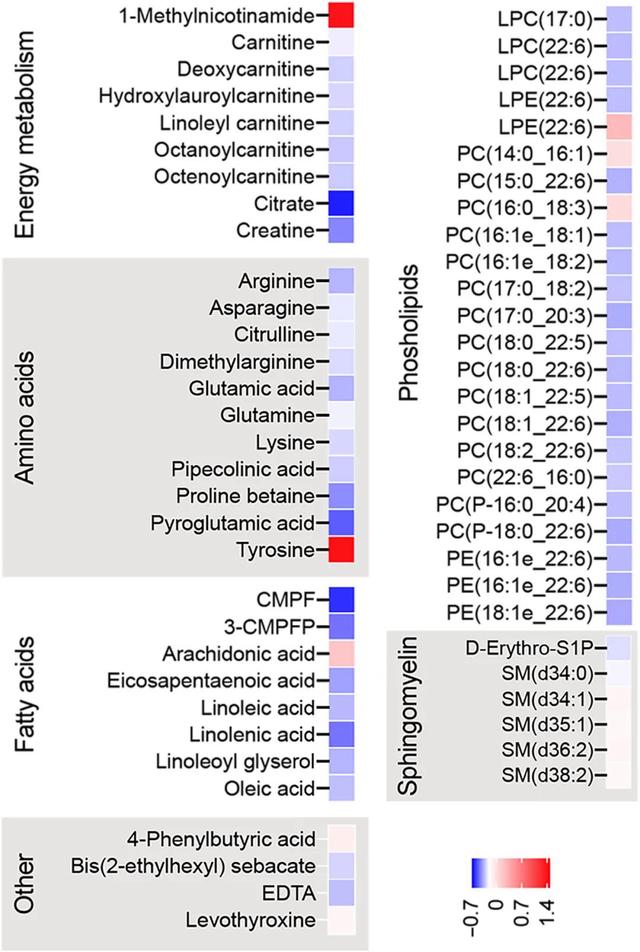
Since DNA methylation may affect gene expression, the researchers also evaluated the association between gene expression and CpG methylation of the corresponding genes. Hypomethylation of PGC-1α may increase its transcription in muscle, while hypomethylation of PAX7 may inhibit its expression in muscle. Some correlations were also found in other genes. Overall, these results suggest that epigenetic regulation may be one of the mechanisms by which NR regulates genes involved in mitochondrial biogenesis and quality control, satellite cell stemness, NAD biosynthesis, and OXPHOS gene expression.
NR alters plasma metabolomic profiles
To understand whether NR affects overall plasma metabolomic profiles, we performed untargeted metabolomic analysis of fasting plasma samples from twins discordant for BMI. Through regression analysis, they found 460 significantly altered metabolites on NR. Among them, 72 metabolites were identified as level 1 or 2 in the Metabolomics Standards Initiative reporting standards.
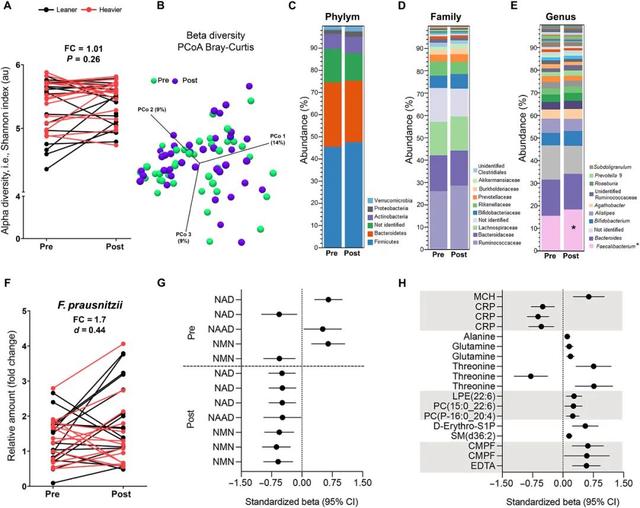
Of the 72 metabolites identified, the most significantly increased metabolite was methylNAM, the NAM waste product, consistent with the whole blood NAD metabolome and global DNA methylation results. In addition, tyrosine levels were significantly elevated in NR, core metabolites for efficient mitochondrial energy production (carnitine, acylcarnitines, and polyunsaturated fatty acids) and levels of several amino acids, and these changes may reflect the effects of NR on mitochondrial energy. Regulation of metabolism, lipid and amino acid metabolism.
NR modulates gut microbiota composition
To assess whether NR modifies the gut microbiota, 16S ribosomal RNA (rRNA) gene sequencing was performed on fecal samples of twins from a BMI-discordant pair. During the study, they found no changes in the alpha or beta diversity of the gut microbiota. However, NR increased the abundance of a bacterial species called Faecalibacterium spp. by about 2%, but this increase was not corrected by testing with multiple false discovery rates.
For further verification, the researchers used real-time quantitative reverse transcription polymerase chain reaction (RT-qPCR) to quantify the effect of NR on F. prausnitzii and found that NR increased the effect of F. prausnitzii by about 1.7-fold. Overall, NR increased the abundance of F. prausnitzii , one of the most important commensal bacteria in the human intestinal microbiota.
Overall, the above findings indicate that NR is a potent modulator of NAD metabolism, muscle mitochondrial biogenesis and stem cell function, gut microbiota, and DNA methylation in humans regardless of BMI.
references:
Helena A. K. Lapatto et al. ,Nicotinamide riboside improves muscle mitochondrial biogenesis, satellite cell differentiation, and gut microbiota in a twin study.Sci. Adv.9,eadd5163(2023).


